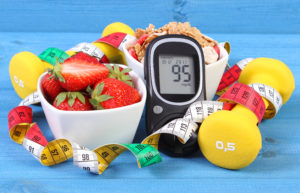What You Should Know About Fruit and Diabetes

Fruit is a great and delicious way to curb your hunger and ward off cravings for more sugary, bad-for-you foods. When you add fruit to your regular diet, you have a better chance of meeting your nutritional needs on a daily basis. However, since just about every fruit has sugar in it, people with diabetes often wonder what they can eat and how much fruit they’re allowed to have. If you’ve been wondering if fruit is an unhealthy choice for a person with diabetes, read on.
Fruit and Managing Diabetes

Fiber plays a big role in how you manage your diabetes. When your diet is high in fiber, it’s able to slow down sugar absorption and balance out your blood sugar levels. Since there are several fruits that are high in fiber, especially when you eat the pulp or skin, fruit is a good way to manage diabetes. Furthermore, the fiber and water in fruits make them filling, which means you’ll be more satisfied on less food. Any diet that has plenty of fruits and veggies may be able to reduce the risk of heart attack and stroke, not to mention obesity, which is linked to Type 2 Diabetes. Since fruits pack in a lot of nutrients and fiber, you should certainly add them to your list when you’re meal planning for the week.
According to the American Diabetes Association, any fruit is fine to eat even if you have diabetes. However, note that processed fruits, like juices and applesauce, have had the fiber removed. In order to get fiber from fruits, you should eat them as raw as possible. Fresh and frozen fruits are best; fruits that come from a can or jar should be avoided or limited.
Additional Health Benefits of Fruit
According to the National Institute of Diabetes and Digestive and Kidney Diseases, fruit is completely healthy for people with diabetes to eat. However, you should make sure to balance your diet so that the foods you eat provide you with energy and help you stay at a healthy weight. Even fruits that are higher in sugar than others, like mangoes, can be added to your diet, so long as you don’t eat too many of them within a short period of time.
Fruits are able to curb a sweet tooth without you turning to high sugar foods that are low in nutritional value, like cake, ice cream and candy. Fruits are a great alternative to these more traditional desserts because they pack in nutrients without having a lot of sodium or fat. Plus, some of the nutrients in certain fruits can’t be found in many other foods. For example, bananas have typrtophan and potassium, while citrus fruits (like grapefruits and oranges) have a lot of Vitamins A and C, both of which are antioxidants.
How Much Fruit Should You Eat

Healthy guidelines suggest that both children and adults eat five servings of fruits and veggies each day. According to U.S. guidelines, you should be filling 50% of your plate with fruits or veggies at every meal. The rest of the plate should contain grains and protein. It’s important to know what one serving of fruit looks like. A medium-sized fruit or a serving size approximately the size of a baseball constitutes one serving. For small fruits like berries, measure out half a cup. If you’re going to eat processed fruit some of the time, the serving size is the same: half a cup. However, if you’re going to eat dried fruit, the serving size is much smaller at just two tablespoons.
Thanks for this service.